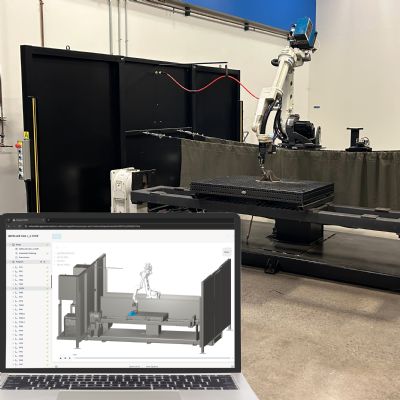Weld Simulation at Rolls Royce Models Complex Fabrication Processes
December 1, 2011Comments
Realistic simulation with finite-element analysis (FEA) is a key tool used by design engineers at the Rolls-Royce Marine division in Derby, UK, tasked with quantifying and verifying welding procedures used in power plants and propulsion systems.
“Welds present a complex modeling problem requiring thermal and structural solutions,” says David Hodgson, a company engineer. “We are looking to predict the distortion of components during manufacture, the position and magnitude of peak residual stresses and the effects of the welding process on the metals involved.”
Hodgson’s group has an ongoing research partnership with the Materials Science Center of The University of Manchester, and UK consulting company Serco Assurance. Rolls-Royce, after evaluating several FEA packages for weld analysis, recently added the Abaqus Welding Interface (AWI), from Simulia, Providence, RI (a Dassault Systèmes brand). An extension to Abaqus/CAE, the welding interface streamlines the generation of two-dimensional welding simulations by providing a graphical user interface for defining all aspects of a weld model, such as weld beads, weld passes, film load and radiation loads.
“The weld simulation tool helps because it allows us to carry out further analysis of thermal and structural models directly within the Abaqus unified FEA environment,” says Hodgson. “This has helped us reduce data-translation issues, training time and expense.”
Researchers decided to use the AWI to examine three different welding scenarios: autogenously (no filler metal) welded plates, an eight-pass groove-welded plate and a seven-pass ring-weld disk. The autogenously welded plate model simulated a single plate of pressure-vessel steel melted by one or two passes of a welding torch. The more complex eight-pass and ring-weld models involved multiple torch passes and a ferritic-steel filler material. Through the AWI, the temperature history calculated in the thermal model provides the temperature input for the structural model. This allows the structural model to analyze the thermal expansion and contraction of the materials being welded that result from changes to the materials’ mechanical properties. 

The similarity of these images (FEA on the top, neutron diffraction on the bottom) of stress measurements on autogenously welded plate validate the predictive accuracy of the FEA model.
“One of the most time-consuming aspects of weld modeling is the surface definitions for heat-transfer coefficients,” says Hodgson. “These definitions must be constantly updated as the weld build-up modeling progresses. The automation of this by the AWI helps speed the process considerably.”
Simulia: 401/276-4400; www.simulia.com
See also: Simulia
Technologies: Welding and Joining







